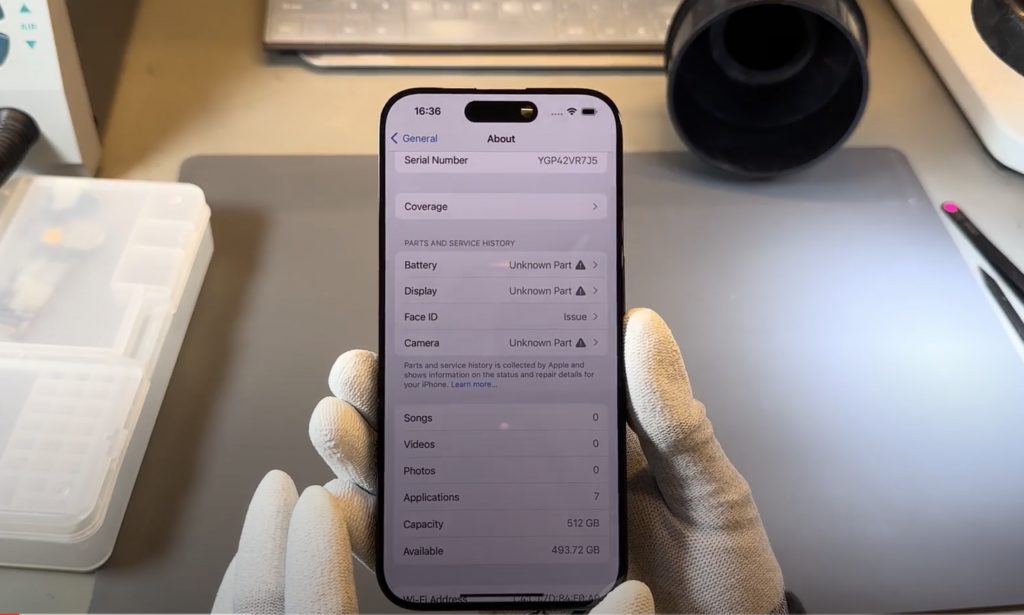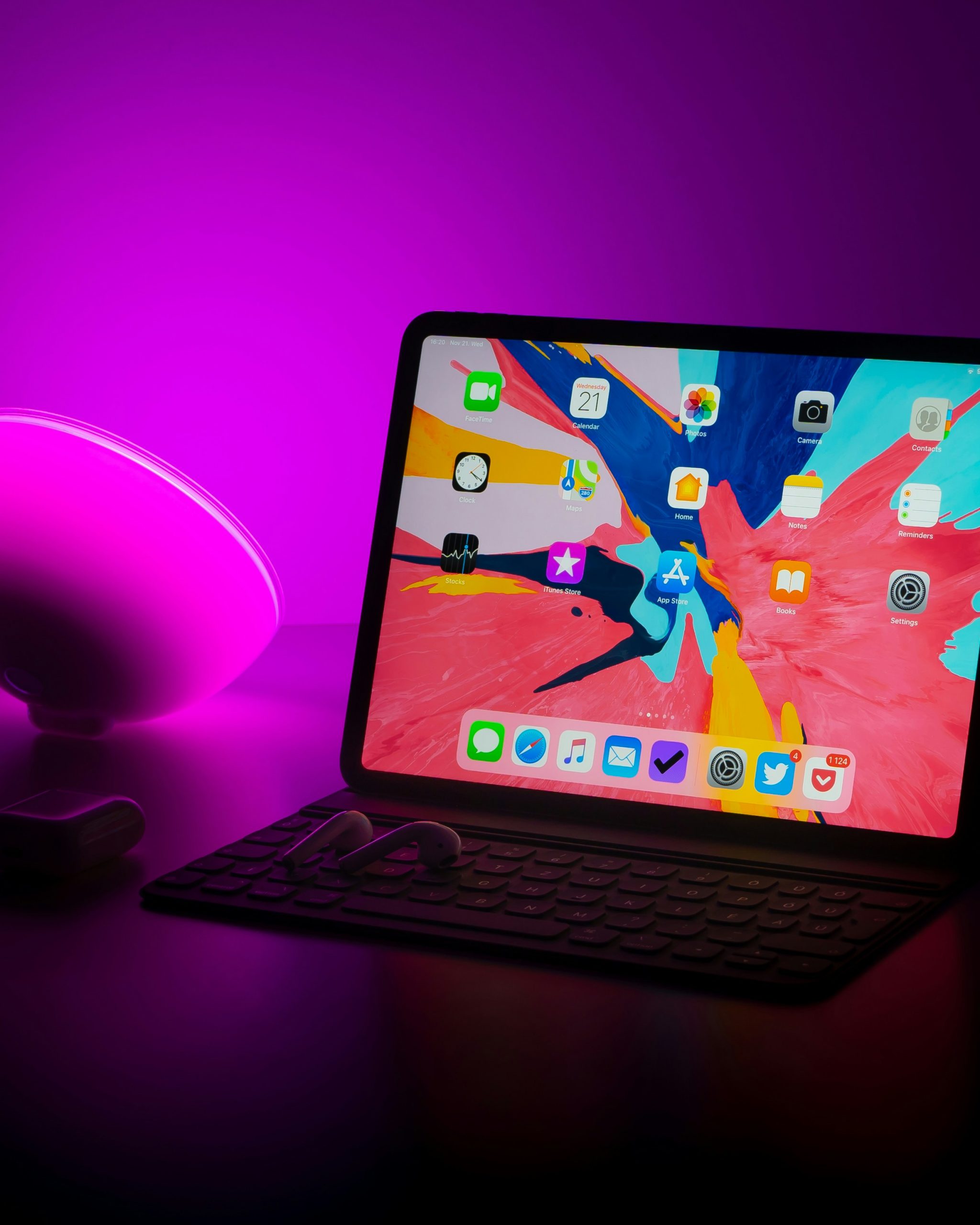Apple is set to unveil its latest iPad models, marking a significant update to their tablet line-up. It’s been a long two-year wait since the last iPad update. This event is particularly noteworthy because it coincides with Oregon’s new right to repair bill, which bans parts pairing. Although Apple has initially focused on removing parts pairing from iPhones, the implications for the new iPads are still up in the air. These new iPads, having an official production date in 2024 before the 2025 legislation takes effect, may still include a level of parts pairing. This issue might not be obvious to everyday consumers but could be significant for third-party repairers like us. At iCorrect, we have all eyes on this new iPad launch as it will have a direct effect on the future of our iPad repairs.
What We Know So Far
For the upcoming iPad release, we’re focusing on features potentially involving parts pairing which could hinder the repair of iPads. The new iPads are rumoured to feature OLED screens with thinner bezels. If Apple applies the same technology used in iPhones, with technology potentially supplied by Samsung Display, these screens might be controlled by microchips that require parts pairing. Another significant component is the anticipated Apple Pencil 3. Previously, parts pairing issues have affected Apple Pencil functionality when the screen is replaced—even with an original screen from another iPad, affecting line precision. We have reported on this pairing in a previous blog.
What are Paired Parts?
Parts pairing involves linking critical components like screens or batteries to a device’s logic board using encrypted microchips. These chips essentially serve as keys, activating specific functionalities. When such a part is replaced—even with another original part from a genuine device—the part loses functionality due to Apple’s lock. It’s a conscious decision made by Apple to lock parts, with security continuously used as the reason to justify such practices. This scenario tends to reinforce Apple’s control over the repair process, limiting third-party repair options and driving up costs, and hindering the repairability of devices for consumers.
We believe that this practice needs to be stopped to ensure greater fairness and accessibility in device repairs globally. We are grateful to Oregon’s right to repair bill for taking a stand against parts pairing by banning this restrictive practice, paving the way for more consumer-friendly repair practices.

What are the Paired Parts in iPad?
In the current landscape, the iPad’s screen is paired with the Display IC, which directly affects the functionality of the Apple Pencil after a screen replacement. Additionally, Apple’s biometric features like Face ID and Touch ID are also paired to the logic board. Despite Apple’s recent shift towards supporting the use of used parts for iPhones, allowing for easier swapping of biometric components, it remains to be seen how or if this policy will extend to iPads. These pairing practices are crucial for third-party repairers to understand as they significantly impact repairability and functionality.
Understanding Parts Pairing at Microchip Level
In addition to the display IC and biometric features, the iPad’s logic boards include microchips that are also subject to parts pairing, particularly within the charging circuit of the iPad Pro models. This level of parts pairing poses significant challenges for third-party repairs. For instance, the USB controllers used in these circuits are model-specific, despite being the same component across different versions. This specificity means that even if the same type of USB controller from another iPad model is used as a replacement, it will not function correctly due to Apple’s proprietary configuration.
This scenario is akin to having a specific brand of tyre, like a 20-inch Pirelli, on your car—it fits perfectly because it’s designed for that model. However, replacing it with the same brand and size of tyre from a different car model won’t guarantee functionality. The tyre would essentially remain “flat” because it’s not calibrated for your specific car model. Similarly, Apple controls the “air”—or in this case, the compatibility—of these components, limiting repairability and forcing dependence on approved repair methods. This practice underscores the importance of monitoring whether Apple will continue this restrictive approach with new iPad models.
Sustainable Repairs at iCorrect
At iCorrect, we see logic board repairs as more sustainable than full replacements, especially when a single microchip fails, which is a common occurrence. Unfortunately, Apple does not currently allow even their own service network to recalibrate an iPad logic board. We hope for a future where Apple collaborates with specialists like us to facilitate these types of repairs. This approach would not only extend the lifespan of devices but also reduce costs for consumers worldwide, promoting a more sustainable and economically friendly solution.
Why Apple Doesn’t Offer iPad Repairs
Apple’s approach to iPad repairs, as reported by consumers and online content, suggests that the company considers the iPad nearly unrepairable at their stores. This is attributed to the design of the iPad, where the screen is glued rather than screwed, complicating the disassembly process. Consequently, Apple often recommends iPad replacements instead of repairs, which can be as costly as purchasing a brand new iPad. This practice can push consumers towards buying newer models rather than repairing existing ones.
Why Apple is Focusing on iPhone with Parts Pairing?
Apple’s recent announcement regarding the use of used parts in repairs, following the Oregon bill, specifically highlights the iPhone 15 range, promising to extend self-calibration to older models in the future. However, this announcement conspicuously omits mention of parts pairing issues prevalent across all Apple products. This oversight includes problems like the MacBook screens, particularly the 14-inch MacBook Pros, where screen replacements lead to functionality issues, and in iPads, where screen replacements affect Apple Pencil performance. Straight lines drawn after screen replacements, without the transfer of the paired microchips, cause squiggly drawn lines. This selective communication strategy from Apple leads to concerns about transparency and full support for repairability across all their devices.
Is This the Best Sleight of Hand We’re About to Witness?
As Apple focuses its communications on the iPhone models, there’s growing concern that parts pairing practices will persist in iPads and MacBooks. However, the Oregon bill, effective January 2025, mandates that no Apple part manufactured thereafter should involve parts pairing. This raises questions about whether this applies at the microchip level—a detail not widely reported. If true, this could impact components beyond the visible ones like screens and batteries, extending to microchips that are integral yet less noticed.
What Parts Pairing in the iPad Means for Consumers
Parts pairing means consumers face challenges with their iPad repairs, which are costly and restrictive. This practice limits the ability to use third-party repair services, as parts or repairs may not function correctly due to calibration issues. Consequently, consumers globally are often pushed towards more expensive Apple services or encouraged to purchase new devices rather than repair existing ones by keeping options limited and prices high. This can significantly impact the overall cost of ownership and reduce the lifespan of devices, conflicting with consumer rights and global sustainability efforts.
We’re eagerly anticipating the upcoming release of the new iPad models, and we’ll be keeping a keen eye on the developments. We look forward to the detailed teardowns by the team at iFixit, who will be scrutinising these devices for parts pairing. Their insights will be crucial in understanding how Apple’s design choices may affect repairability and consumer choice.
Thank you for reading.
Ricky Panesar.




